They Thought It Was Impossible; Then This Dog Learned to Speak Using Buttons
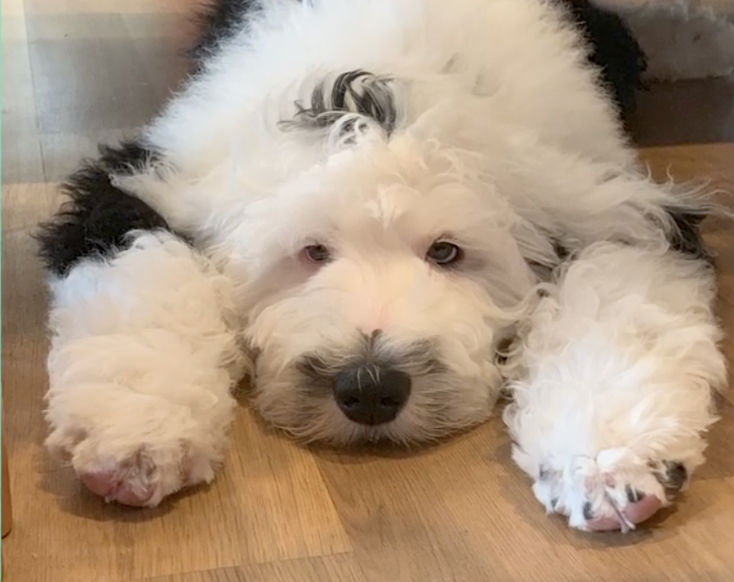
What started as a simple pandemic experiment turned into one of the most remarkable breakthroughs in animal communication. Bunny, a Sheepadoodle from Washington state, gained viral fame when she learned to use a soundboard of buttons to “speak” with her owner, Alexis Devine. Each button corresponds to a word or phrase, such as “play,” “outside,” or “I love you,” allowing Bunny to communicate her desires and emotions. What began as a fun project in 2020 quickly evolved into a global phenomenon, as Bunny’s ability to combine buttons into more complex expressions shocked the world.
Bunny’s journey challenged conventional thinking about animal intelligence. Initially, she requested food or walks, but soon, she was combining buttons like “Dad work?” or “Ouch paw” to communicate her needs and even report pain. The idea of animals using technology to express themselves was once a far-off fantasy. Still, Bunny’s viral success opened the door to serious exploration of animal cognition and how pets might communicate with humans on a deeper level.
Meet Bunny, the Dog Who “Talks” with Buttons

Bunny’s newfound fame stems from her use of a button board, where each button triggers a word or phrase when pressed. Words like “play” or “outside” were her first go-to requests, but it wasn’t long before Bunny began to combine buttons in more creative ways. This included pressing “Ouch paw” when she hurt herself and “What dog this?” when looking at a mirror. These unexpected combinations proved that Bunny’s button-pressing wasn’t just instinct. It was a sign of intentional, complex thought.
Bunny’s viral videos led to debates about the potential cognitive abilities of animals. Her actions went beyond simple requests, sparking questions about whether pets can understand and use language in a meaningful way. Bunny’s “speech” wasn’t just an adorable trick. It was a glimpse into a future where animals might honestly communicate with humans, and it captured the imagination of researchers and pet owners alike.
It All Started in 2020

In the early months of the pandemic, Alexis Devine decided to experiment with speech buttons to keep Bunny engaged while stuck at home. The first few videos she posted to social media were just for fun, but Bunny’s ability to use the buttons to communicate quickly caught the world’s attention. What seemed like a simple pandemic pastime turned into something much more profound as Bunny began to use the buttons in increasingly complex ways.
Bunny’s viral success wasn’t just a stroke of luck; it sparked a global trend. By 2021, pet owners everywhere were experimenting with the same buttons, and the idea that animals could learn to communicate in this way began to gain serious traction. Bunny had started a movement that would change the way people thought about their pets and their ability to understand and express themselves.
A Real Study Backed It Up
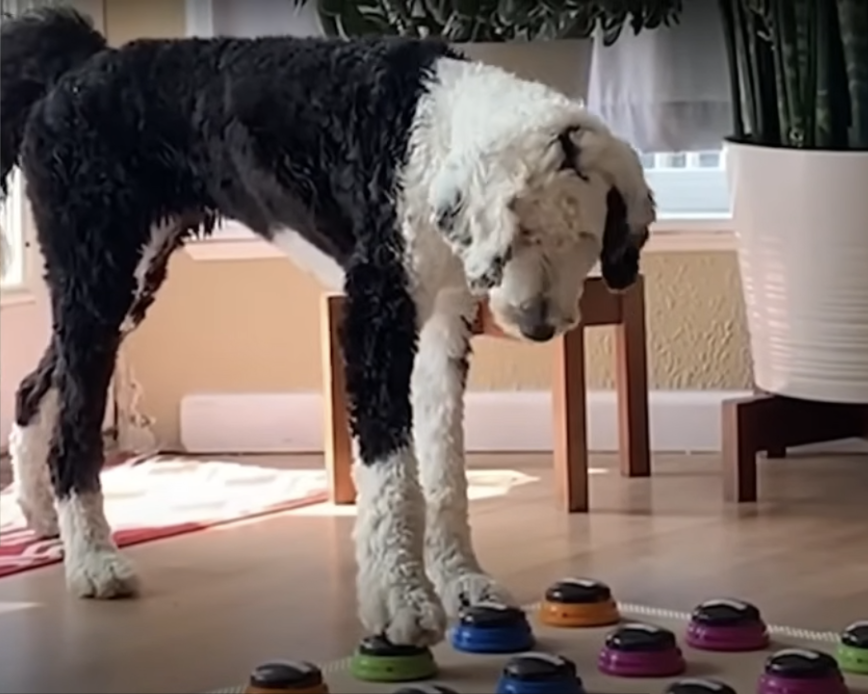
As Bunny’s fame grew, researchers became interested in studying her ability to communicate with buttons. She was included in the TheyCanTalk project, led by cognitive scientist Dr. Leo Trottier, which investigates how animals use human-designed systems to communicate. The study focuses on understanding whether animals can adapt these systems to express complex thoughts or use them as simple signals. Bunny’s use of buttons, including her ability to combine them into more sophisticated combinations, made her the perfect subject for this groundbreaking study.
While experts debate whether Bunny’s communication qualifies as actual language, the study has shown that her use of buttons is both meaningful and intentional. Dr. Trottier’s research suggests that animals, like Bunny, might be capable of understanding and using words in ways we’ve never considered. Bunny’s involvement in the study is helping reshape our understanding of animal cognition and communication, making it clear that animals might possess more intellectual depth than we ever thought.
Bunny Didn’t Just Ask for Treats

At first, Bunny’s communication using the buttons seemed simple, asking for food, walks, or playtime. But over time, Bunny began to combine buttons in increasingly complex ways. For example, she used “Ouch paw” to express pain when she was hurt and “Dad work?” to ask about her father’s absence. The most viral moment came when Bunny looked at herself in a mirror and pressed “What dog this?” a question that left the internet buzzing about the depth of her self-awareness.
This combination of buttons, allowing for more nuanced expression, showed that Bunny wasn’t just mimicking actions; she was actively engaging with her environment. Bunny’s ability to press multiple buttons simultaneously to convey complex ideas suggested a deeper level of cognitive understanding, prompting researchers to wonder how far this ability could be taken. Was Bunny using language, or was she simply associating words with specific actions? Either way, her behavior suggested that animals could have much more cognitive complexity than we ever imagined.
Scientists Are Still Divided

Scientists remain divided on whether Bunny’s button usage constitutes actual language, but there’s no denying the significance of her communication. Some believe that while Bunny’s behavior might not fit the traditional definition of language, it indicates a higher level of cognition and emotional awareness in animals. Others are more cautious, arguing that her button-pressing could be a form of advanced signaling, not language.
What is clear, however, is that Bunny’s communication is far from accidental. The fact that she can combine multiple buttons to convey specific ideas demonstrates intentionality, a key characteristic of meaningful communication. Whether it’s called language or not, Bunny’s use of buttons is a clear indication that animals are capable of more complex thinking than we’ve historically acknowledged.
Bunny Sparked a Global Trend
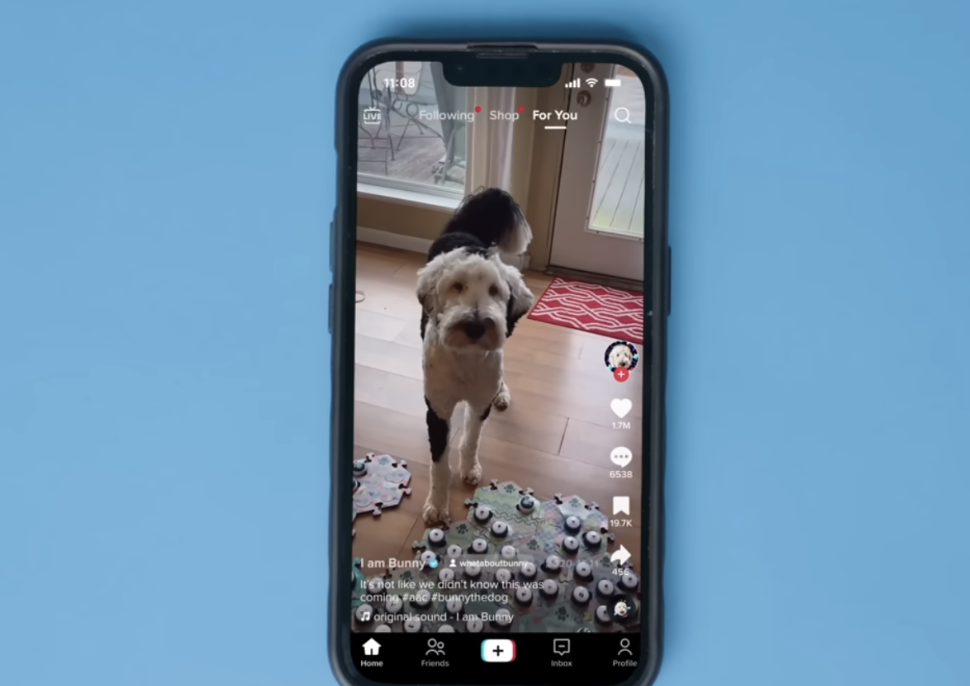
By 2021, Bunny wasn’t just a viral sensation. She had sparked a global trend. Pet owners worldwide have begun experimenting with speech button systems to communicate with their pets. Today, thousands of animals, primarily dogs, are learning to use buttons to express themselves. Some pets have even learned up to 90 words, surprising their owners with their ability to understand and convey specific ideas. What began as Bunny’s personal breakthrough has now evolved into a worldwide movement, with animals of all kinds utilizing these systems to express their needs, desires, and emotions.
This trend has led to the development of pet-specific button kits, training apps, and other resources to help pet owners teach their animals to use these systems. What was once a curiosity has now become a serious tool for understanding our pets on a deeper level. This global movement is transforming our interactions with animals and offering new insights into their emotional and cognitive worlds.
It’s Not Just Dogs Anymore

Bunny’s success has gone beyond just dogs. Other species, like cats, pigs, and even birds, are now using speech button systems to communicate. While dogs are still the primary users, these animals are showing surprising learning curves, especially species that were previously thought to have limited cognitive abilities. Some pigs, for example, have learned to press buttons to express desires for food or attention. Birds have even shown the ability to pick up new words and use them in creative ways.
As animals from different species begin to learn how to communicate using these systems, researchers are increasingly interested in how far this ability can extend. The success of these systems has raised new questions about the intellectual capabilities of animals and how we can better understand their thoughts and feelings. With every new species that participates in these experiments, the potential for interspecies communication grows, offering new insights into the minds of animals.
The Technology Keeps Evolving
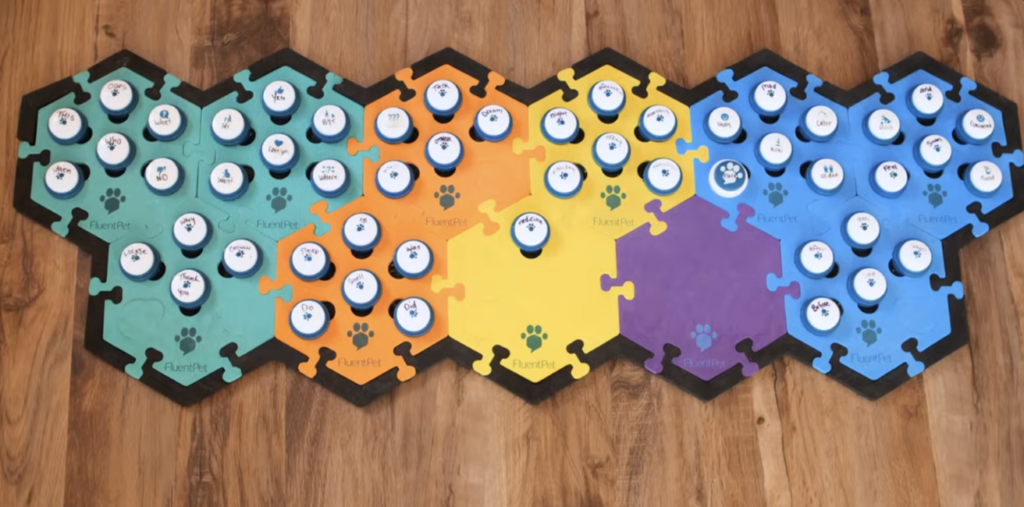
As the popularity of speech buttons for pets grows, technology has evolved to meet the increasing demand. Companies now offer pet-specific button kits, training apps, and mounts that make it easier for pet owners to teach their animals how to use the buttons. In 2025, the next phase of pet communication technology is being introduced: smart boards that track word usage and suggest personalized learning paths based on each animal’s progress. These advanced systems will provide valuable insights into animal cognition and offer new ways for pets to express themselves.
The rapid evolution of this technology is reshaping how we think about human-animal interaction. What was once a simple experiment is now a highly sophisticated tool that enables deeper communication between humans and pets. As the technology improves, it promises to unlock new dimensions in understanding animal behavior, allowing us to connect with our pets in ways we never thought possible.
Bunny Is Still Talking in 2025
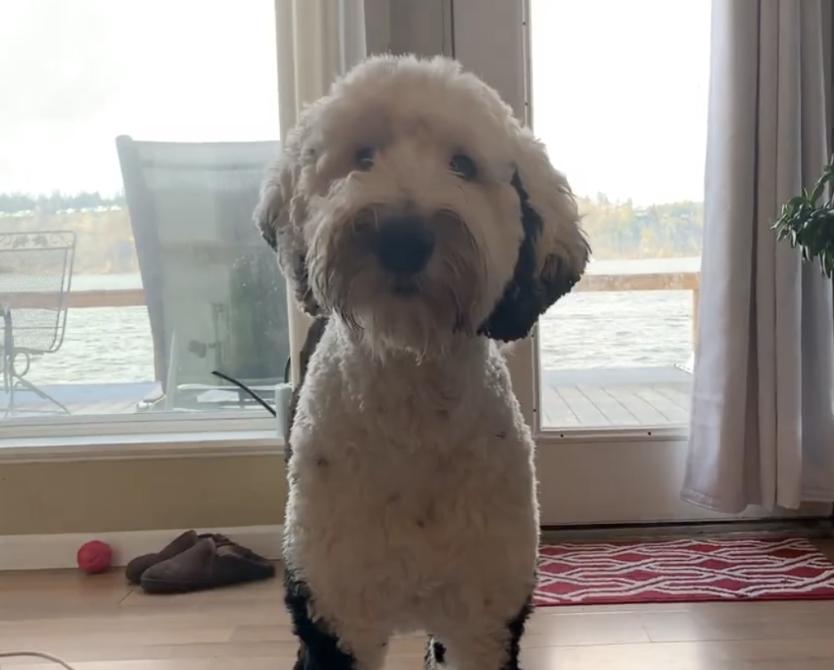
Bunny’s journey didn’t end when the viral videos stopped. In 2025, Bunny continues to use her speech buttons to communicate her thoughts, feelings, and frustrations. Her button setup now includes new phrases like “frustrated,” “stranger danger,” and “more happy,” showing that she continues to expand her vocabulary and express a broader range of emotions. Her social media presence has grown, and she continues to engage with her fans, sharing her quirky moments and everyday adventures.
Bunny’s ongoing use of the buttons highlights that this communication system is not just a passing trend. It has become a permanent part of her life, allowing her to engage with her owner and the world in new and meaningful ways. Bunny’s journey from a viral sensation to a continuing source of inspiration shows that animals have always had something to say. We’ve just finally figured out how to listen.
What If This Is Just the Beginning?

The idea that animals can communicate with humans in any form was once pure science fiction. Now, in 2025, it’s happening in homes across the world. Whether or not we’re witnessing true language is still up for debate, but one thing is clear: animals have always had something to say. We’re just now learning how to listen. Bunny’s breakthrough was just the beginning, and as technology advances, the possibilities for interspecies communication are endless. The future of human-animal communication is unfolding before our eyes, and it’s more exciting than ever.
This article, They Thought It Was Impossible—Then This Dog Learned to Speak Using Buttons was first published on dailyfetch.net.


